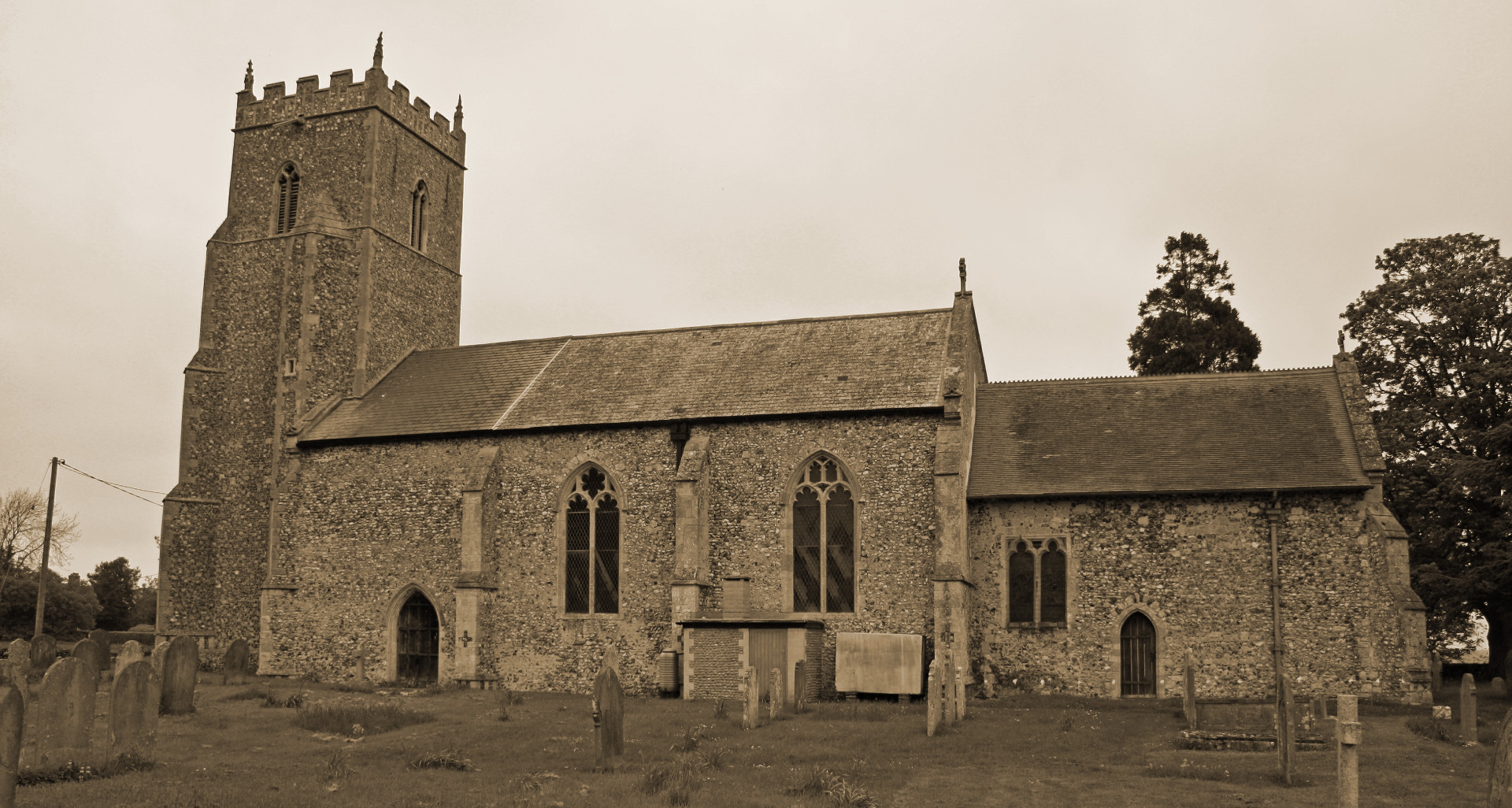Tharston Lime Kiln
A restoration project

One
of the first major projects that the THS is undertaking is the
renovation of the Lime Kiln in Tharston with the full help and support
of the owner Gerald Barnes. Many hurdles have to be overcome before work
can begin on this in earnest but we hope this will be very soon.
The Lime Kiln is a Grade II listed building and can be seen here on the British Listed Buildings website listed as Lime Kiln, Tharston and Hapton.
For further information on this project or offers of help please email web@tharston-history-society.com.
Photos of the site before the project was started
Paul Cattermole - historian
Industry in Tharston - 1 Lime and bricks
Some time ago Paul Cattermole researched and wrote a short treatise on the lime burning and brickmaking in Tharston. The copyright for this work is held by Barbara Cattermole and family. No part of this publication may be reproduced, stored in a retrieval system, or transmitted in any form, or by any means, without the prior consent of the author's family.
Paul's document can be viewed as a MS Word document or a PDF.
Further information
The following information was received from Peter from GeoLancashire following a contact made regarding the project:
"Emptying the chamber would be fraught with risk. The infill may be what is preventing the walls from collapsing. I don't think you would gain much from it, a good explanation board with a diagram ought to suffice. However, if it is safe, one of the tunnels could be opened sufficiently to give access to one of the loading out points. You have to decide whether, once opened, it will remain safe. It would surely only be worthwhile if people can at least see a loading out point with grid bars if they are still present. You might have to install a steel mesh barrier near the tunnel entrance to prevent people from entering a hazardous area.
It is not powdered quicklime that comes out of the kiln. It is mostly in lumps, albeit with some dust. The grid allows air into the base of the kiln. As the air passes up between the lumps it provides oxygen for combustion. Natural England regularly get details of the quicklime production process wrong. They must be short of technical people because the identical introduction (with fundamental errors) has been used for at least five listed lime kilns in the northwest. I am irritated because you expect Natural England to get such things right and they are promulgating misunderstanding.
Many lime kilns were open at the top almost to the full diameter of the chamber, so the feed of stone and fuel was probably from the sides all around the top. Many larger kilns had a tramway around the top for narrow gauge trucks from the quarry. If there is a tramway to the kiln top this may be the case for your kiln. A little field archaeology might answer that question. Use of small scale side-tipping railway trucks would save a lot of hard labour.
Is the raw material chalk? Chalk is easier to convert to quicklime than hard limestone, because it is much more porous. Porosity helps to let heat in and carbon dioxide out.
If you can, I would check whether they used wood or charcoal for fuel. Charcoal would be better but I have read that, when needs must, even bracken was used. A temperature of about 900ᵒC is required, red hot. It sounds very unlikely that burning bracken would reach that temperature, but for agriculture even a low quicklime content would be better than using limestone alone. If your chalk is marly, the kiln may have made hydraulic lime, a cousin to Portland cement. Hydraulic lime mortar sets under water. You may be able to find out if you can find records of customers. If your kiln produced hydraulic lime it would be 'more special'. Any old quicklime will do for fertiliser, although strictly it isn't a fertiliser at all. It reduces soil acidity and thereby makes nutrients available for plant growth. You need to look this up to get the details correct. Quicklime spreading was normally accompanied by fertilising with farm muck for instance."
A talk on Lime and Lime Kilns
At our Open Meetings held on 4th May 2017 Peter Del Strouther, the Peter from above, gave a talk on the topic of Lime and Lime Kilns. This was very well received and all who attending really enjoyed it and learned a lot about the processes involved and about our local example.
Brick Kiln plan
The plan below was found at the Norfolk Archive Centre by the current owner of Vittoria whilst researching the history of his own house.
Page last updated: 11 February 2019

